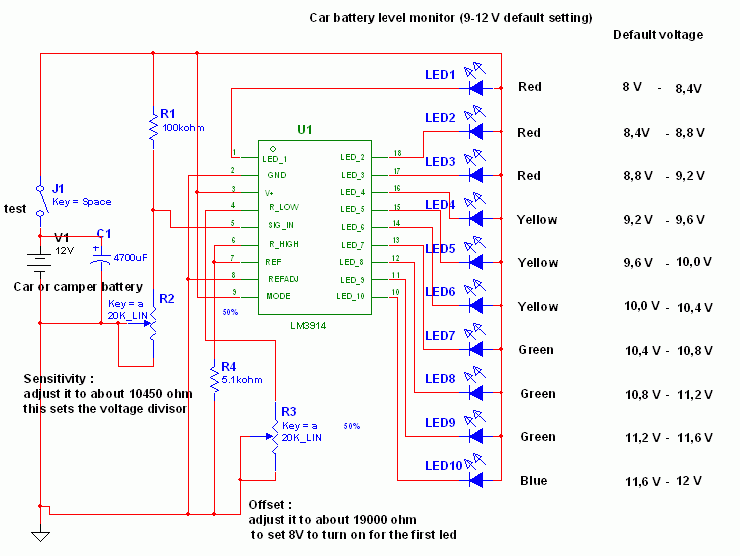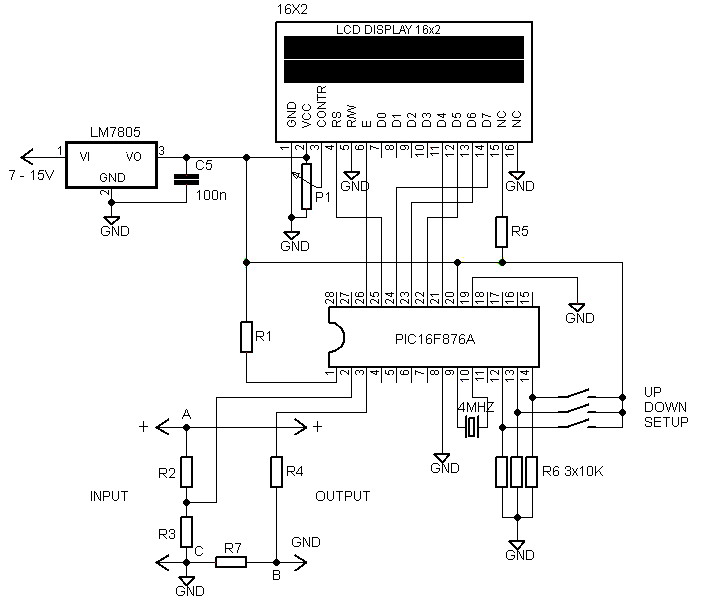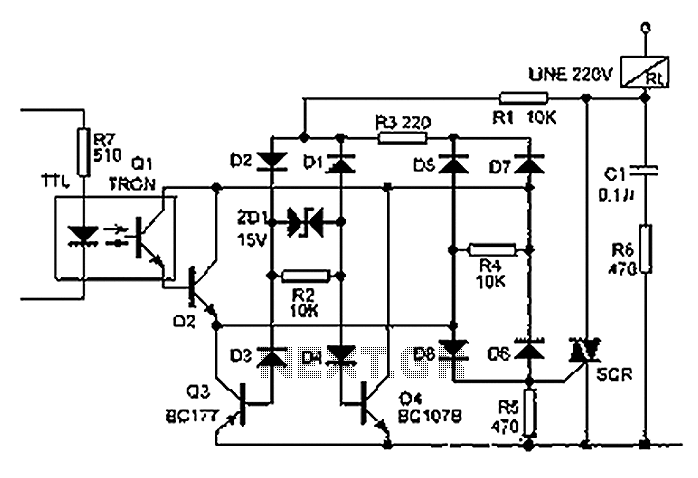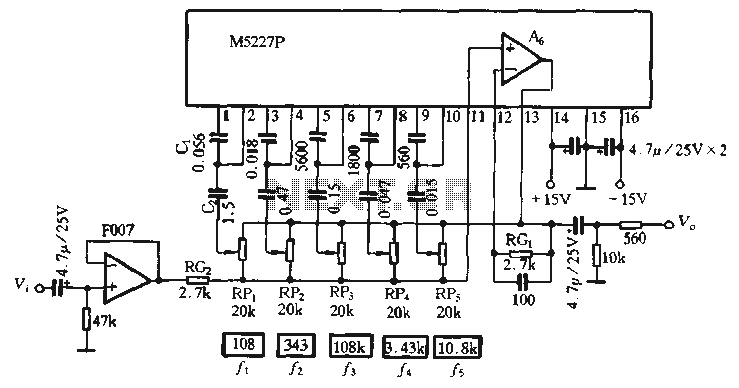
components voltage tester circuit schematic
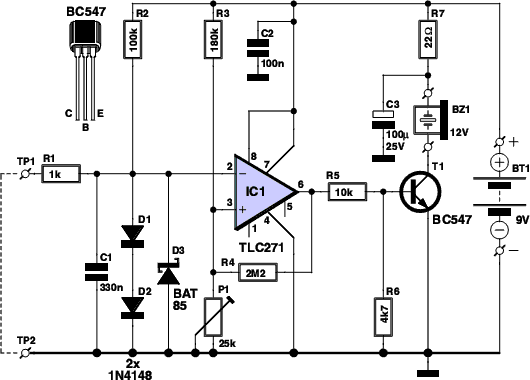
This simple circuit tests speakers, microphones, transformers, and voltage. It is essentially a very low-frequency oscillator that produces extremely short "fruity" pulses. The sound produced is easy to hear and allows for precise determination of its direction, making it ideal for checking phasing in multiple speaker installations. It is also useful for car stereo installations and public address systems, where it can drive numerous speakers directly on a 100V or 70V line system.
The circuit operates as a low-frequency oscillator, typically using a configuration that includes an operational amplifier or a 555 timer IC to generate square wave pulses at a frequency below the audible range. The output stage may consist of a power amplifier capable of driving the load presented by speakers or other devices under test.
The oscillator's output is characterized by short, distinct pulses, which can be modulated to create a "fruity" sound that is not only distinctive but also provides a clear indication of speaker functionality. The frequency and duty cycle of these pulses can be adjusted to suit specific testing requirements, allowing for versatility in various applications.
In practical use, the circuit can be connected to speaker lines in a public address system or car stereo setup. The 100V or 70V line systems are commonly used in commercial audio installations, where multiple speakers are wired in parallel. This circuit can efficiently drive these speakers, ensuring that the phasing is correct and that all speakers are functioning properly.
Furthermore, the ability to hear the output distinctly aids technicians and engineers in quickly diagnosing issues related to speaker placement and wiring. This feature is particularly beneficial in large installations where auditory feedback can simplify troubleshooting processes.
In summary, this circuit serves as a valuable tool for audio professionals, enabling effective testing and verification of audio components in various environments, ensuring optimal performance and sound quality.This simple circuit tests speakers, microphones, transformers and voltage. It`s basically a very low frequency oscillator that produces extremely short `fruity` pulses. The type of sound produced is very easy to hear and to determine the precise direction it is coming from, thus making it ideal for checking the phasing in multiple speaker installations. It is also very useful for car stereo installations as well as public address systems where it can drive dozens of speakers directly on a 100V or 70V line system..
🔗 External reference
The circuit operates as a low-frequency oscillator, typically using a configuration that includes an operational amplifier or a 555 timer IC to generate square wave pulses at a frequency below the audible range. The output stage may consist of a power amplifier capable of driving the load presented by speakers or other devices under test.
The oscillator's output is characterized by short, distinct pulses, which can be modulated to create a "fruity" sound that is not only distinctive but also provides a clear indication of speaker functionality. The frequency and duty cycle of these pulses can be adjusted to suit specific testing requirements, allowing for versatility in various applications.
In practical use, the circuit can be connected to speaker lines in a public address system or car stereo setup. The 100V or 70V line systems are commonly used in commercial audio installations, where multiple speakers are wired in parallel. This circuit can efficiently drive these speakers, ensuring that the phasing is correct and that all speakers are functioning properly.
Furthermore, the ability to hear the output distinctly aids technicians and engineers in quickly diagnosing issues related to speaker placement and wiring. This feature is particularly beneficial in large installations where auditory feedback can simplify troubleshooting processes.
In summary, this circuit serves as a valuable tool for audio professionals, enabling effective testing and verification of audio components in various environments, ensuring optimal performance and sound quality.This simple circuit tests speakers, microphones, transformers and voltage. It`s basically a very low frequency oscillator that produces extremely short `fruity` pulses. The type of sound produced is very easy to hear and to determine the precise direction it is coming from, thus making it ideal for checking the phasing in multiple speaker installations. It is also very useful for car stereo installations as well as public address systems where it can drive dozens of speakers directly on a 100V or 70V line system..
🔗 External reference

